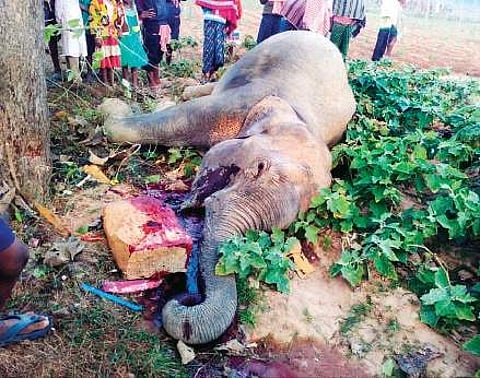

BHUBANESWAR: One elephant dies in Odisha every four days. If this is not shocking enough brace for worse. Over 95 per cent of the deaths have clear human involvement. The State has turned into a killing ground for the gentle giants.
Statistics with the Forest and Environment Department reveal that 65 elephants have already lost their lives within nine months - between April and mid-December this year. What is most appalling is, 62 of them have succumbed to causes that have a definite human connection.
Despite all claims of the State Government and the Department on instituting stringent measures for the protection of wildlife, Odisha has virtually allowed a free-run to poachers. At least 10 elephants have been killed by poachers at different places during the nine months if deliberate electrocution is taken into account.
The gravity of the situation can be well-gauged by the blood-curdling incident of a female elephant died after chewing a bomb at Rajanagar under Athagarh forest division. The eight-year-old female was found dead on December 12 with its mouth shattered by the explosion. The horrendous brutality with which the jumbos are being exterminated right under the nose of the State forest and wildlife authorities defies imagination.
Wildlife conservationists said poaching of wild animals is rampant and unchecked in the State and will continue until accountability is fixed on the top-most officials who have failed to prevent it. Apart from poaching, loss of natural habitat, conflict with humans and accidents are the other key reasons behind the death of jumbos in the State. Deaths due to electrocution, train accidents, falling in well, muddy tanks and drains expose the gaps which the wildlife authorities and other government departments have failed to plug.
While 19 elephants have lost their lives in electrocution, either by accident or deliberate, six have been run over by trains and 12 fell in well, muddy tanks or nullahs from April to December. To save elephants from habitat loss and relentless conflict with humans, the State Government has identified 14 elephant corridors and launched several projects. However, the death of four elephants in a train accident in Jharsuguda in April and seven elephants due to electrocution in Dhenkanal in October clearly shows the way the projects in elephant corridors are being executed.
Wildlife conservationist Aditya Panda said, “Mitigation measures need to be devised around a basic and non-negotiable principle that elephants must be provided free and safe passage when they move through human-dominated landscapes. Any mitigation plan aimed at restricting elephant movement will prove disastrous.